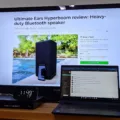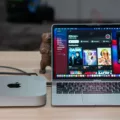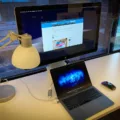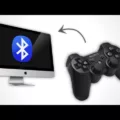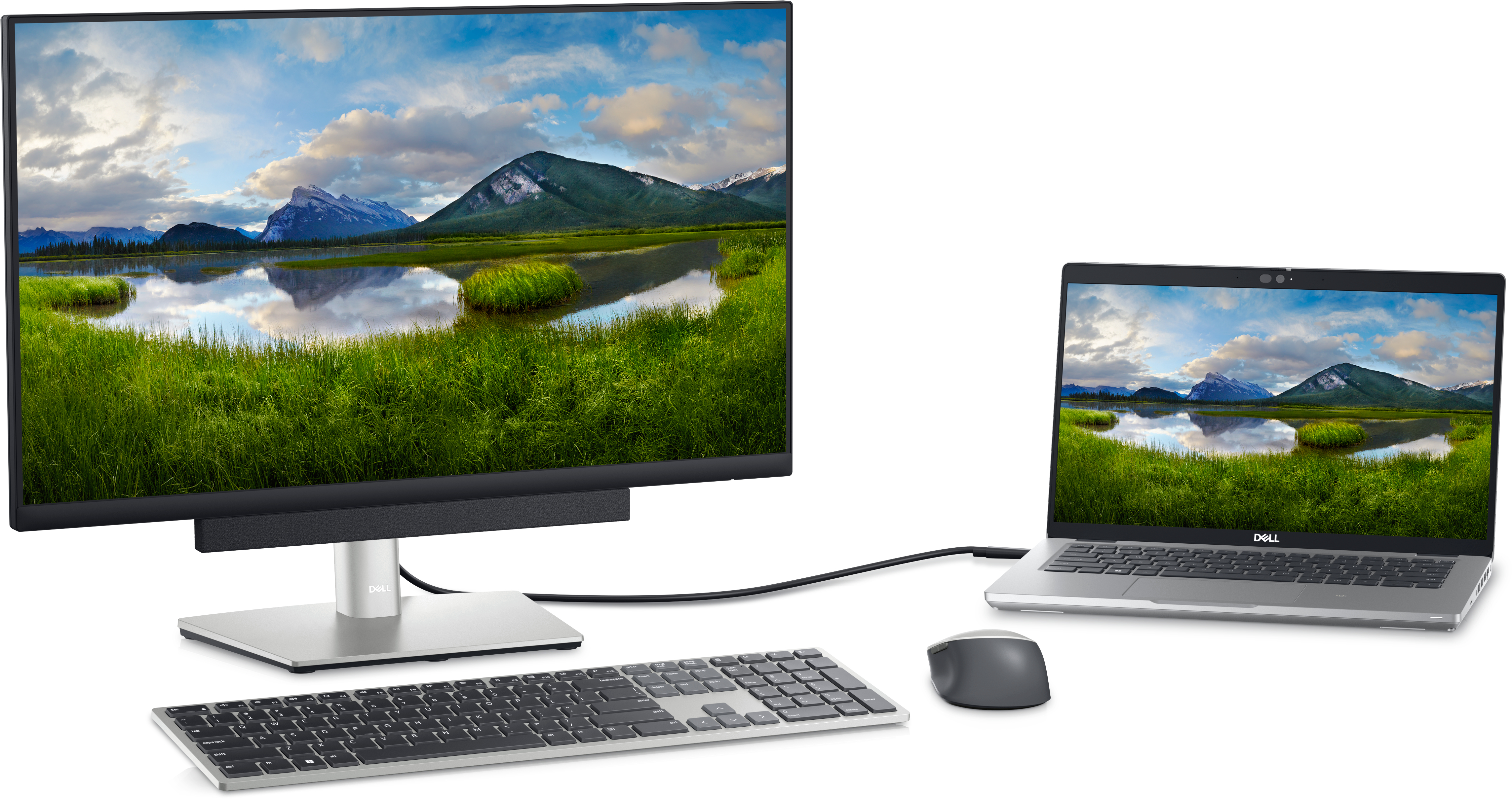In today’s world, where technology is advancing at an exponential rate, it has become easier than ever to display your laptop’s screen on your TV. Whether you want to watch a movie, play a game, or give a presentation, connecting your laptop to a TV can make it a lot more enjoyable and convenient. In this article, we will discuss how to display your laptop screen on your TV, with or without an HDMI cable.
Method 1: Connect with HDMI
The easiest and most common way to connect your laptop to your TV is through an HDMI cable. Almost all modern laptops and TVs come equipped with an HDMI port, making it a breeze to connect the two devices. Here’s how to do it:
1. Plug one end of the HDMI cable into the HDMI output on your laptop.
2. Plug the other end of the cable into one of the HDMI inputs on your TV.
3. Using the remote control, select the input that corresponds to where you plugged in the cable (HDMI 1, HDMI 2, HDMI 3, etc.).
4. Both devices just need to be turned on and connected to the same Wi-Fi network.
5. To share your computer’s screen on your TV, press the Home button on your TV remote. Navigate to and select Source, select PC on TV, and then select Screen Sharing.
Method 2: Connect with VGA
If your laptop doesn’t have an HDMI port, you can still connect it to your TV using a VGA cable. Here’s how:
1. Connect your laptop to your TV with a VGA cable.
2. Connect these two devices by using a 3.5mm audio cable.
3. Turn on your laptop and TV.
4. Choose PC or RGB input on your TV with the help of the remote.
Displaying your laptop screen on your TV has never been easier. Whether you use an HDMI cable or a VGA cable, connecting your laptop to your TV can enhance your viewing experience and make it more enjoyable. So, go ahead and give it a try!
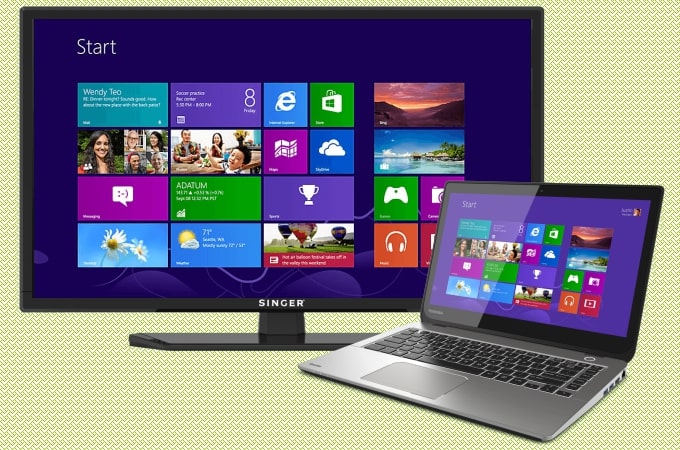
Wirelessly Displaying a Laptop on a TV
You can display your laptop on your TV wirelessly if both devices are compatible with Miracast™ technology. Miracast™ is a wireless standard that allows you to mirror your computer or mobile device screen to a TV or other display that also supports Miracast™.
To use wireless screen mirroring on your Windows® 10 laptop, you need to make sure that your computer has a Wi-Fi adapter that supports Miracast™. Once you have confirmed that your laptop is compatible, you can follow the steps to connect your laptop to your TV wirelessly:
1. Turn on your TV and make sure it is connected to the same Wi-Fi network as your laptop.
2. On your laptop, click the “Action Center” icon in the lower right corner of the screen or press the “Windows key + A” to open the Action Center.
3. Click on “Connect” in the Action Center.
4. Select your TV from the list of available devices.
5. Follow the on-screen instructions to connect your laptop to your TV wirelessly.
Once you have connected your laptop to your TV wirelessly, you can use it to display or extend your computer screen. This can be useful for presentations, watching movies, or playing games on a larger screen.
If your laptop and TV support Miracast™ technology, you can display your laptop on your TV wirelessly by following the steps above.
Connecting a Laptop to a TV Using HDMI
To display your laptop screen on your TV using HDMI, you need to follow these steps:
1. First, locate the HDMI output port on your laptop. It is usually located on the side or back of the laptop.
2. Next, connect one end of the HDMI cable to the HDMI output port on your laptop.
3. Now, locate the HDMI input port on your TV. It is usually located on the back or side of your TV.
4. Connect the other end of the HDMI cable to the HDMI input port on your TV.
5. Once you have connected the HDMI cable to both your laptop and TV, turn on your TV and select the HDMI input that you have connected the cable to.
6. Your laptop screen should now be displayed on your TV. If it doesn’t appear automatically, you may need to adjust your laptop’s display settings to ensure that the output is being sent to the TV.
7. To adjust your laptop’s display settings, right-click on your desktop and select “Display settings”. From there, you can choose to duplicate your screen or extend it to your TV.
By following these steps, you can easily display your laptop on your TV using HDMI.
Connecting a Laptop to a Smart TV Wirelessly
To wirelessly connect your laptop to your Smart TV, you can follow a few simple steps:
1. Make sure both your laptop and Smart TV are connected to the same Wi-Fi network.
2. On your TV remote, press the Home button and navigate to the Source option.
3. From the Source menu, select PC on TV and then choose Screen Sharing.
4. On your laptop, open the Display settings by right-clicking on the desktop and selecting Display Settings.
5. From the Display Settings menu, click on Connect to a Wireless Display.
6. Your laptop will then search for available wireless displays. Select your Smart TV from the list of available devices.
7. Once you have selected your Smart TV, your laptop screen should be mirrored on your TV. You can now enjoy your laptop content on your Smart TV wirelessly.
In summary, to wirelessly connect your laptop to your Smart TV, make sure both devices are connected to the same Wi-Fi network, select the PC on TV option from the Source menu on your TV, and use the Connect to a Wireless Display option on your laptop’s Display settings to select your Smart TV.
Mirroring Laptop to TV Without HDMI
Mirroring your laptop to your TV without HDMI is possible by using other types of cables and technologies such as VGA, DVI, DisplayPort, or wireless connectivity. Here are some steps that you can follow to mirror your laptop to your TV without HDMI:
Method 1: Using VGA Cable
1. Check if your laptop and TV are equipped with VGA ports.
2. Purchase a VGA cable that matches the ports of your laptop and TV.
3. Connect one end of the VGA cable to your laptop’s VGA port and the other end to your TV’s VGA port.
4. Connect a 3.5mm audio cable from your laptop’s audio output to your TV’s audio input.
5. Turn on your laptop and TV.
6. Select the “PC” or “VGA” input on your TV using your TV remote control.
7. Your laptop screen should now be mirrored on your TV.
Method 2: Using DVI Cable
1. Check if your laptop and TV are equipped with DVI ports.
2. Purchase a DVI cable that matches the ports of your laptop and TV.
3. Connect one end of the DVI cable to your laptop’s DVI port and the other end to your TV’s DVI port.
4. Connect a 3.5mm audio cable from your laptop’s audio output to your TV’s audio input.
5. Turn on your laptop and TV.
6. Select the “PC” or “DVI” input on your TV using your TV remote control.
7. Your laptop screen should now be mirrored on your TV.
Method 3: Using DisplayPort Cable
1. Check if your laptop and TV are equipped with DisplayPort ports.
2. Purchase a DisplayPort cable that matches the ports of your laptop and TV.
3. Connect one end of the DisplayPort cable to your laptop’s DisplayPort port and the other end to your TV’s DisplayPort port.
4. Connect a 3.5mm audio cable from your laptop’s audio output to your TV’s audio input.
5. Turn on your laptop and TV.
6. Select the “PC” or “DisplayPort” input on your TV using your TV remote control.
7. Your laptop screen should now be mirrored on your TV.
Method 4: Using Wireless Connectivity
1. Check if your laptop and TV support wireless connectivity such as Miracast, Chromecast, or Apple TV.
2. Purchase the respective wireless device that matches your laptop and TV.
3. Connect the wireless device to your TV using the HDMI port.
4. Turn on the wireless device and follow the instructions to connect it to your laptop.
5. Your laptop screen should now be mirrored on your TV wirelessly.
By following the above methods, you can mirror your laptop to your TV without HDMI.
Conclusion
Connecting your laptop to your TV can be done in various ways depending on the available ports and the technology of your devices. With an HDMI cable, you can easily mirror your laptop screen on your TV or extend it to have a larger display. On the other hand, if your laptop or TV does not have an HDMI port, you can opt for VGA or wireless screen mirroring options. Regardless of the method you choose, connecting your laptop to your TV is a convenient way to enjoy your favorite movies, TV shows, and games on a bigger screen. It also allows you to share presentations and photos with a larger audience during meetings or gatherings. By following the steps outlined above, you can easily connect your laptop to your TV and enjoy the benefits of a larger display.






